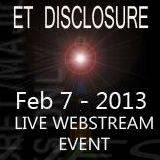Here's more...
http://www.newscientist.com/article/mg20627571.100-the-secrets-of-intelligence-lie-within-a-single-cell.html?full=true
Be Well.
David
- 26 April 2010 by Brian J. Ford

Modelling the neuron as little more than a simple on/off switch is a big mistake (Image: Dan Webber)
LATE at night on a sultry evening, I watch intently as the predator senses its prey, gathers itself, and strikes. It could be a polecat, or even a mantis - but in fact it's a microbe. The microscopic world of the single, living cell mirrors our own in so many ways: cells are essentially autonomous, sentient and ingenious. In the lives of single cells we can perceive the roots of our own intelligence.
Molecular biology and genetics have driven the biosciences, but have not given us the miraculous new insights we were led to expect. From professional biologists to schoolchildren, people are concentrating on the minutiae of what goes on in the deepest recesses of the cell. For me, however, this misses out on life in the round: it is only when we look at the living cell as a whole organism that wonderful realities emerge that will alter our perception not only of how single cells enact their intricate lives but what we humans truly are.
The problem is that whole-cell biology is not popular. Microscopy is hell-bent on increased resolution and ever higher magnification, as though we could learn more about animal behaviour by putting a bacon sandwich under lenses of increasing power. We know much about what goes on within parts of a cell, but so much less about how whole cells conduct their lives.
Currently, cell biology deals largely with the components within cells, and systems biology with how the components interact. There is nothing to counterbalance this reductionism with a focus on how whole cells behave. Molecular biology and genetics are the wrong sciences to tackle the task.
Let's take a look at some of the evidence for ingenuity and intelligence in cells that is missing from the curriculum. Take the red algae Rhodophyta, in which many species carry out remarkable repairs to damaged cells. Cut a filament of Antithamnion cells so the cell is cut across and the cytoplasm escapes into the surrounding aquatic medium. All that remains are two fragments of empty, disrupted cell wall lying adjacent to, but separate from, each other. Within 24 hours, however, the adjacent cells have made good the damage, the empty cell space has been restored to full activity, and the cell walls meticulously realigned and seamlessly repaired.
The only place where this can happen is in the lab. In nature, the broken ends of the severed cell would nearly always end up remote from each other, so selection in favour of an automatic repair mechanism through Darwinian evolution would be impossible. Yet something amazing is happening here: because the damage to the Antithamnion filament is unforeseeable, the organism faces a situation for which it has not been able to adapt, and is therefore unable to call upon inbuilt responses. It has to use some sort of problem-solving ingenuity instead.
We regard amoebas as simple and crude. Yet many types of amoeba construct glassy shells by picking up sand grains from the mud in which they live. The typical Difflugia shell, for example, is shaped like a vase, and has a remarkable symmetry.
Compare this with the better known behaviour of a caddis fly larva. This maggot hunts around the bottom of the pond for suitable scraps of detritus with which to construct a home. Waterlogged wood is cemented together with pondweed until the larva has formed a protective covering for its nakedness. You might think this comparable to the home built by the testate amoeba, yet the amoeba lacks the jaws, eyes, muscles, limbs, cement glands and brain the caddis fly larva relies on for its skills. We just don't know how this single-celled organism builds its shell, and molecular biology can never tell us why. While the home of the caddis fly larva is crude and roughly assembled, that of the testate amoeba is meticulously crafted - and it's all made by a single cell.
The products of the caddis fly larva and the amoeba, and the powers of red algae, are about more than ingenuity: they pose important questions about cell intelligence. After all, whole living cells are primarily autonomous, and carry out their daily tasks with little external mediation. They are not subservient nanobots, they create and regulate activity, respond to current conditions and, crucially, take decisions to deal with unforeseen difficulties.
Just how far this conceptual revolution about cells could take us becomes clearer with more complex animals, such as humans. Here, conventional wisdom is that everything is ultimately controlled by the brain. But cells in the liver, for example, reproduce at just the right rate to replace cells lost through attrition; follicular cells create new hair; bone marrow cells produce new circulating blood cells at a rate of millions per minute. And so on and on. In fact, around 90 per cent of this kind of cell activity is invisible to the brain, and the cells are indifferent to its actions. The brain is an irrelevance to most somatic cells.
So where does that leave the neuron, the most highly evolved cell we know? It ought to be in an interesting and privileged place. After all, neurons are so specialised that they have virtually abandoned division and reproduction. Yet we model this cell as little more than an organic transistor, an on/off switch. But if a red alga can "work out" how to solve problems, or an amoeba construct a stone home with all the "ingenuity" of a master builder, how can the human neuron be so lowly?
Unravelling brain structure and function has come to mean understanding the interrelationship between neurons, rather than understanding the neurons themselves. My hunch is that the brain's power will turn out to derive from data processing within the neuron rather than activity between neurons. And networks of neurons enhance the effect of those neurons "thinking" between themselves. I think the neuron's action potentials are rather like a language neurons use to transmit processed data from one to the next.
Back in 2004, we set out to record these potentials, from neurons cultured in the lab. They emit electrical signals of around 40 hertz, which sound like a buzzing, irritating noise played back as audio files. I used some specialist software to distinguish the signal within the noise - and to produce sound from within each peak that is closer to the frequency of a human voice and therefore more revealing to the ear.
Listening to the results reprocessed at around 300 Hz, the audio files have the hypnotic quality of sea birds calling. There is a sense that each spike is modulated subtly within itself, and it sounds as if there are discrete signals in which one neuron in some sense "addresses" another. Could we be eavesdropping on the language of the brain?
For me, the brain is not a supercomputer in which the neurons are transistors; rather it is as if each individual neuron is itself a computer, and the brain a vast community of microscopic computers. But even this model is probably too simplistic since the neuron processes data flexibly and on disparate levels, and is therefore far superior to any digital system. If I am right, the human brain may be a trillion times more capable than we imagine, and "artificial intelligence" a grandiose misnomer.
I think it is time to acknowledge fully that living cells make us what we are, and to abandon reductionist thinking in favour of the study of whole cells. Reductionism has us peering ever closer at the fibres in the paper of a musical score, and analysing the printer's ink. I want us to experience the symphony.





No comments:
Post a Comment